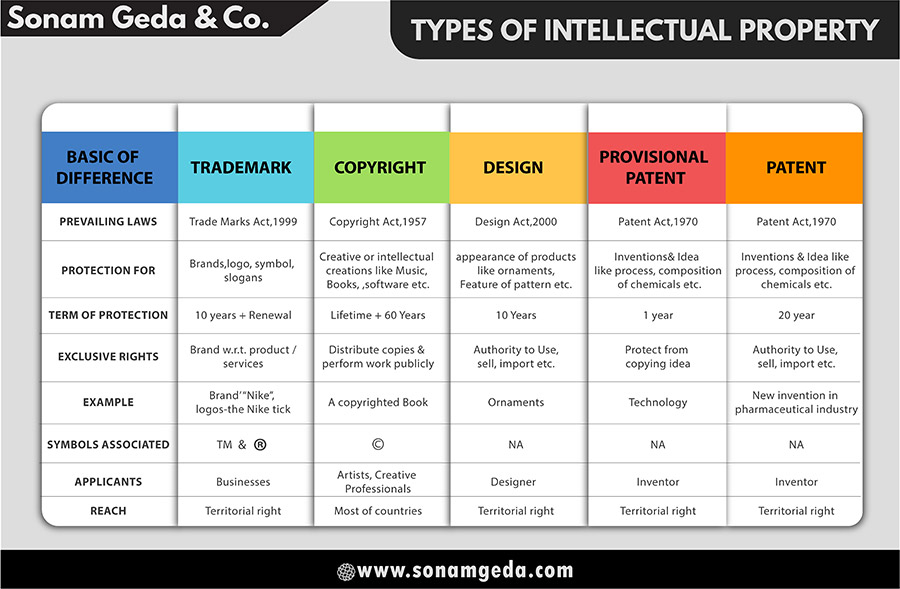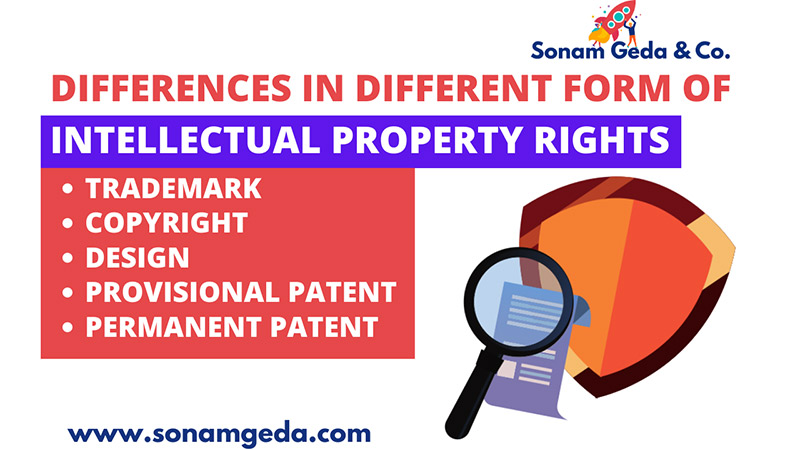Permanent Patent
Overview of Patent Registration
The patent is an Intellectual property that provides its owner exclusive right to exclude others from using, selling, importing, or creating the invention for a restricted period without prior permission of the owner.
The Patent Act, 1970 govern the registration and protection of Patent in India. The Patent protects for Novel and original inventions similar to machines, processes, manufacture, the composition of matter, and its improvement.
Once the patent application is filed and the patent is granted then she becomes the exclusive owner of the invention.


Who is eligible to file an application for Patent?
The Patent application will be filed by any individual or business enterprise who or which either be true and the first inventor or by the assignee of the inventor.
In case the inventor is deceased then legal representative of an inventor may apply. This application can be file either alone or together with any other person.
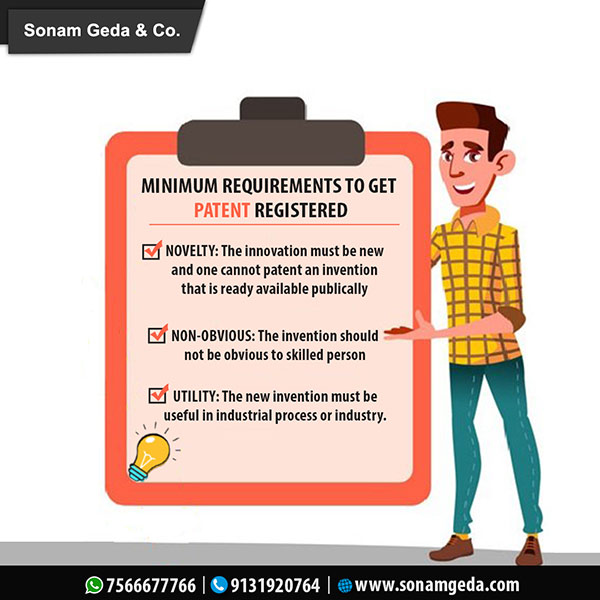
Minimum Requirement to get Patent Registered
Patent registrations do not apply to all inventions, and the invention must satisfy certain criteria to be patentable in India.in other words, a Patent is granted by the government if the invention fulfills the following requirements:
- NOVELTY: The innovation must be new. One cannot patent an invention that is already available publically.
- NON-OBVIOUS: This means that the product or process must be inventive it should not be obvious to a skilled person if so it is not patentable.
- UTILITY: The new product, process or invention must be useful which it must apply to or applicable in the industrial process.

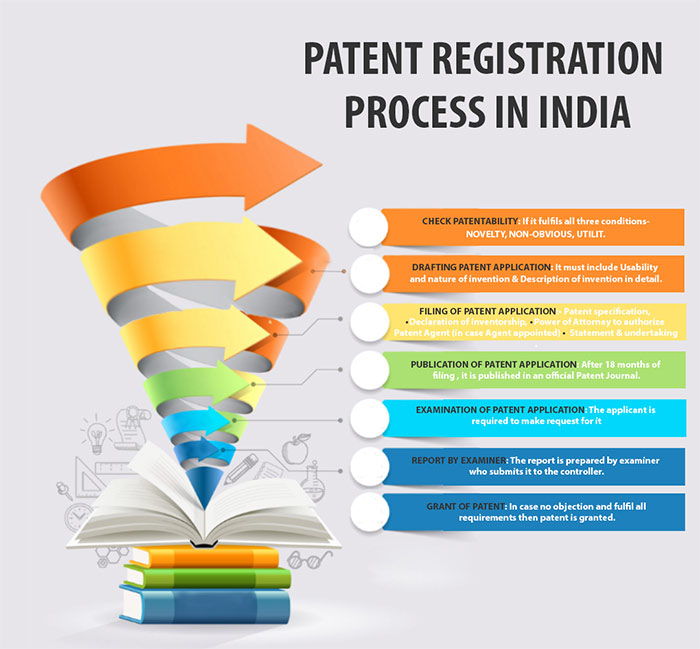

Patent Registration Process in India
STEP 1: CHECK PATENTABILITY- The registration process of Patent started with the Patent search. Check that the invention is not already registered (published) to verify its patentability. It should be patentable as per the Patent Act, 1970.
Essential conditions to meet patentability:
NOVELTY: The innovation must be new. One cannot patent an invention that is already available publically.
NON-OBVIOUS: This means that the product or process must be inventive it should not be obvious to a skilled person if so it is not patentable.
UTILITY: The new product, process or invention must be useful which it must apply to or applicable in the industrial process.
STEP 2: DRAFTING PATENT APPLICATION: There are two types of patent applications first one is the Provisional Patent application and the second one is Complete Patent Application. For every Patent application, there is compulsorily required to file Form 2 that is for a Patent specification. While drafting Patent application following clauses should be included:
i. Usability and nature of invention.
ii. Description of invention in detail.
iii. Describe the future scope and function of invention
iv. Title of invention
v. Problem solving technique by invention
vi. Abstract of invention
vii. Novel feature of invention
viii. Elements like diagram which explain the invention
STEP 3: FILING OF PATENT APPLICATION- Application for Patent can be filed by self or through Patent Agent (Professional). Along with the patent application, the following is required to be filed.
• Patent specification,
• Declaration of inventorship, v
• Power of Attorney to authorize Patent Agent (in case Agent appointed)
• Statement & undertaking
STEP 4: PUBLICATION OF PATENT APPLICATION- After 18 months of filing patent application the application is published in an official Patent Journal.
If anyone wants to publish his/its application before this 18 months period then he is required to submit the prescribed form along with the prescribed fees for the early publication
STEP 5: EXAMINATION OF PATENT APPLICATION- For examination of the patent application, the applicant is required to make a request for it in the form prescribed. After that, the application is thoroughly examined by the examiner.
The request for examination should be filed within 48 months of filing the patent application and If not filed within the prescribed time limit then the application shall be treated as withdrawn.
STEP 6: REPORT BY EXAMINER- The report of examination of patent is prepared by examiner who submits it to the controller. The controller is then analyse the report and check for any objection.
If any objection arises then time will be provided by him to applicant to resolve it.
STEP 7: GRANT OF PATENT- Once all the requirements for patent are fulfilled the patent is then granted to the applicant. And the same is published in the Patent Journal.
Jurisdiction of a Patent Office
The offices for patent filing in India are spread across major cities like Mumbai, Chennai, Kolkata and Delhi.
Jurisdiction of a patent office are the following:
| Mumbai Patent Office Jurisdiction | Delhi Patent Office Jurisdiction |
|---|---|
| The States of Gujarat, Maharashtra, Madhya Pradesh, Goa, Chhattisgarh, the Union Territories of Daman & Diu and Dadra & Nagar Haveli | The States of Haryana, Himachal Pradesh, Jammu and Kashmir, Punjab, Rajasthan, Uttar Pradesh, Uttarakhand, National Capital Territory of Delhi and the Union Territory of Chandigarh |
| Chennai Patent Office Jurisdiction | Kolkata Patent Office Jurisdiction |
| The States of Andhra Pradesh, Karnataka, Kerala, Tamil Nadu and the Union Territories of Pondicherry and Lakshadweep. | Rest of India, the States of Bihar, Orissa, West Bengal, Sikkim, Assam, Meghalaya, Manipur, Tripura, Nagaland, Arunachal Pradesh and Union Territory of Andaman and Nicobar Islands. |

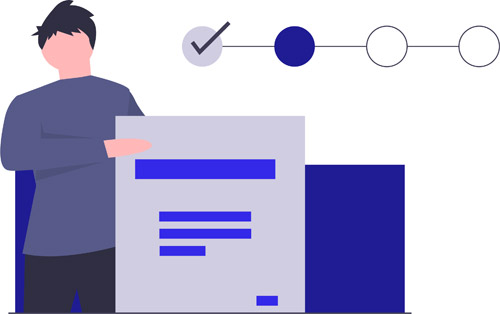
Forms for Patent Application
There are certain forms which are required to be filed for the purpose of patent application, these includes following:
- Form 1: Application for grant of Patent.
- Form 2: Patent specification.
- Form 3 – Statement and Undertaking Under Section 8
- Form 5: Declaration of inventorship.
- Form 9 – Request for early Publication
- Form 18 – Request for Examination of Application for Patent
- Form 26: Authorising Patent Agent.
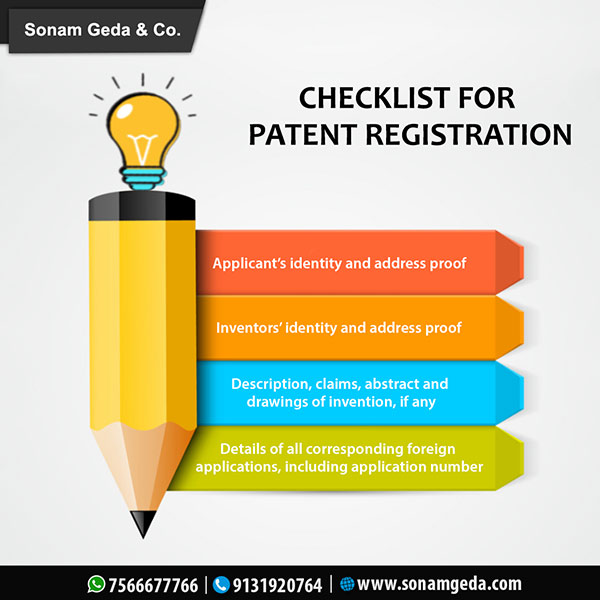
Document Required for Patent Registration
Following documents are required to be filed for patent application:
- Applicant's identity and address proof
- Inventors’ identity and address proof
- Description, claims, abstract and drawings, if any
- Details of all corresponding foreign applications, including application number, date of filing.


Term of Protection (Validity)
The Patent once granted by authority is valid for 20 years from the date filing application for patent.
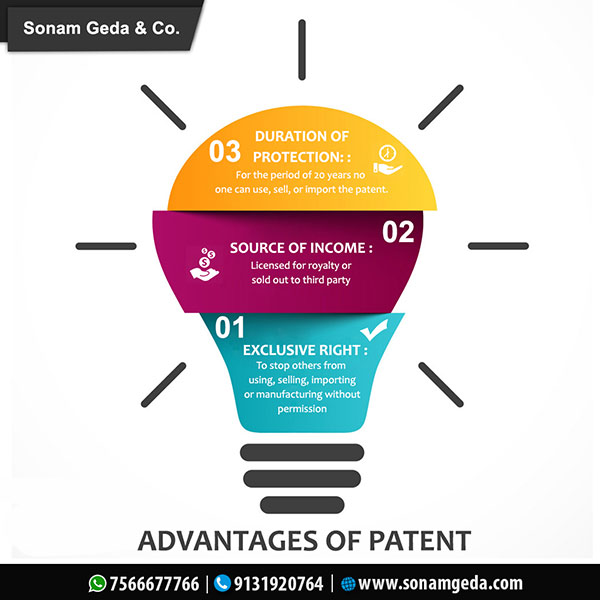
Advantages of Patent
- EXCLUSIVE RIGHT: The holder of the patent enjoys the exclusive right to stop others from using, selling, importing, or manufacturing his invention without his permission.
- SOURCE OF INCOME: The Patent rights can be licensed for royalty or can be sold out to third party which can be proved to be source of income generation for patent holder.
- DURATION OF PROTECTION: Once the patent is granted by patent office it is valid for 20 years from the date of filing application that means for 20 years no one can use, sell, or import the patent.
- • A patent can be helpful to build a business of the patent holder and increases the revenue
- It gives the inventor a competitive advantage over its rival .


Government Fees for Patent Application
Fees for application of Patent (Form 1 fee)
o In case of e-filing
| Applicant | Fee Applicable |
|---|---|
| Natural person or start-up | 1600 |
| Small Entity | 4000 |
| Others | 8000 |
o In case of Physical filing
| Applicant | Fee Applicable |
|---|---|
| Natural person or start-up | 1750 |
| Small Entity | 4400 |
| Others | 8800 |
Form 9 – Request for early Publication
o In case of e-filing
| Applicant | Fee Applicable |
|---|---|
| Natural person or start-up | 2500 |
| Small Entity | 6250 |
| Others | 12500 |
o In case of Physical filing
| Applicant | Fee Applicable |
|---|---|
| Natural person or start-up | 2750 |
| Small Entity | 6900 |
| Others | 13750 |
Fees for request of examination (Form 18 fee)
o In case of e-filing
| Applicant | Fee Applicable |
|---|---|
| Natural person or start-up | 4000 |
| Small Entity | 10000 |
| Others | 20000 |
o In case of Physical filing
| Applicant | Fee Applicable |
|---|---|
| Natural person or start-up | 4400 |
| Small Entity | 11000 |
| Others | 22000 |

What is Patent Registration?
Patent is an Intellectual property that provides its owner exclusive right to exclude others from using, selling, importing or creating the invention for a restricted period of time without prior permission of the owner.
The Patent Act, 1970 govern the registration and protection of Patent in India. The Patent provides protection for Novel and original inventions similar to machines, processes, manufacture, composition of matter and its improvement.
Once the patent application is filed and patent is granted then she becomes the exclusive owner of the invention.
Who is eligible to file an application for Patent Registration?
The Patent application will be filed by any individual or business enterprise who or which either be true and first inventor or by the assignee of the inventor.
The Patent application will be filed by any individual or business enterprise who or which either be true and first inventor or by the assignee of the inventor.
What are the minimum requirements for Patent Registration?
Patent registrations are not applicable for all inventions, and the invention must satisfy certain criteria to be patentable in India.in other words, a Patent is granted by government if the invention fulfils following requirements:
- NOVELTY: The innovation must be new. One cannot patent an invention that is already available publically.
- NON-OBVIOUS: This means that the product or process must be inventive it should not be obvious to skilled person if it so it is not patentable.
- UTILITY: The new product, process or invention must be useful which it must applied to or applicable in industrial process.
What are the forms for filing Patent application?
There are certain forms which are required to be filed for the purpose of patent application, these includes following:
- Form 1: Application for grant of Patent.
- Form 2: Patent specification.
- Form 3 – Statement and Undertaking Under Section 8
- Form 5: Declaration of inventorship.
- Form 9 – Request for early Publication
- Form 18 – Request for Examination of Application for Patent
- Form 26: Authorising Patent Agent.
What is the process of Patent Registration in India?
There are certain forms which are required to be filed for the purpose of patent application, these includes following:
- STEP 1: CHECK PATENTABILITY
- STEP 2: DRAFTING PATENT APPLICATION
- STEP 3: FILING OF PATENT APPLICATION
- STEP 4: PUBLICATION OF PATENT APPLICATION
- STEP 5: EXAMINATION OF PATENT APPLICATION
- STEP 6: REPORT BY EXAMINER
- STEP 7: GRANT OF PATENT
What documents are required to file Patent registration application?
Following documents are required to be filed for patent application:
- Applicant's identity and address proof
- Inventors’ identity and address proof
- Description, claims, abstract and drawings, if any
- Details of all corresponding foreign applications, including application number, date of filing.
What is validity of Patent?
The Patent once granted by authority is valid for 20 years from the date filing application for patent.
What are the advantages of Patent?
- EXCLUSIVE RIGHT: The holder of patent enjoys the exclusive right to stop others from using, selling, importing or manufacturing his invention without his permission.
- SOURCE OF INCOME: The Patent rights can be licensed for royalty or can be sold out to third party which can be proved to be source of income generation for patent holder.
- DURATION OF PROTECTION: Once the patent is granted by patent office it is valid for 20 years from the date of filing application that means for the period of 20 years no one can use, sell, or import the patent.
- Patent can be helpful to build business of the patent holder and increases the revenue
- It gives the inventor a competitive advantage over it's rival .
What is difference between Provisional Patent and different form of Intellectual Properties?
A detailed comparative chart of difference between various forms of intellectual properties can be found at the end of this page.
Difference in Different Form of Intellectual Property Rights
What are the Government fees for Patent Application in India?
Fees for application of Patent (Form 1 fee)
o In case of e-filing
| Applicant | Fee Applicable |
|---|---|
| Natural person or start-up | 1600 |
| Small Entity | 4000 |
| Others | 8000 |
o In case of Physical filing
| Applicant | Fee Applicable |
|---|---|
| Natural person or start-up | 1750 |
| Small Entity | 4400 |
| Others | 8800 |
Form 9 – Request for early Publication
o In case of e-filing
| Applicant | Fee Applicable |
|---|---|
| Natural person or start-up | 2500 |
| Small Entity | 6250 |
| Others | 12500 |
o In case of Physical filing
| Applicant | Fee Applicable |
|---|---|
| Natural person or start-up | 2750 |
| Small Entity | 6900 |
| Others | 13750 |
Fees for request of examination (Form 18 fee)
o In case of e-filing
| Applicant | Fee Applicable |
|---|---|
| Natural person or start-up | 4000 |
| Small Entity | 10000 |
| Others | 20000 |
o In case of Physical filing
| Applicant | Fee Applicable |
|---|---|
| Natural person or start-up | 4400 |
| Small Entity | 11000 |
| Others | 22000 |
What are the examples of Patent?
Patent is an Intellectual property that provides its owner exclusive rights. Some of the examples of Patent are new invention in pharmaceutical industry, certain computer programs may fall within the subject matter protected by both patents and copyrights.
What are the Types of Patent?
There are three types of Patent:
- UTILITY PATENT: This Patent is granted to the inventor who invents a new and useful invention or any new and useful improvement thereof that is not obvious to others in the field of invention.
- PLANT PATENTS: This Patent is granted to the inventor who invents and asexually reproduces any distinct and new species of plant.
- DESIGN PATENT: Design Patent is granted to anyone who invents a new, original, and ornamental design for an object which can include the shape or configuration of an object.
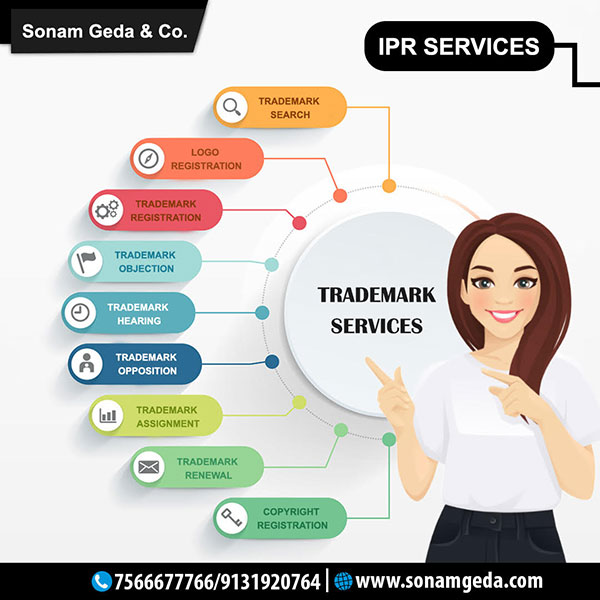
Subscribe Our Newsletter
Get useful latest news & other important update on your email.






